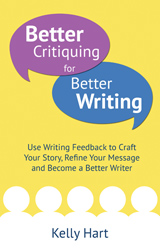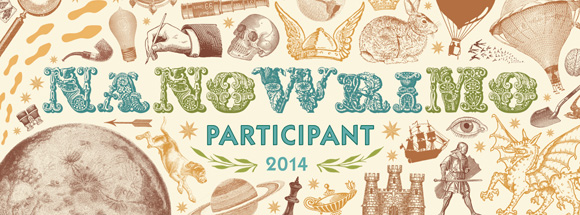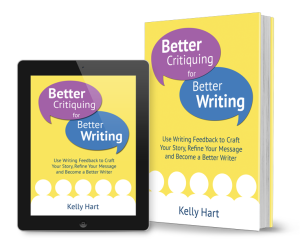 Remember when you had to create a book title for your first book?
Remember when you had to create a book title for your first book?
Perhaps you’re about to?
One of the hardest things to do as a writer is figure out how to create a book title that suits your book.
You may be one of those lucky authors that has a flash of inspiration giving you the perfect title (lucky you!), but just because this happened once or twice doesn’t mean that you will always be this blessed.
For those that have trouble wrangling the perfect title, don’t despair.
You don’t need to come up with the perfect title until your book is written and ready to be sent off, until then you can use what authors call a working title.
A working title is basically a place-holder for the real title and can be as simple as the first thing you think of when it comes to your book.
First, let’s use an example.
For my nonfiction book Better Critiquing for Better Writing, my working title was just Better Critiquing. This was later changed to Better Critiquing for Better Writing to give the readers more of an idea how the book will help them.
The fiction book I’m currently writing has the working title Shallishee Storm, this is because the planet the action takes place on is called Shallishee.
You see? You don’t need to bash your head against the wall, because it can be quite simple to come up with a working title for your book in progress.
So, now what?
So what happens if you finish writing your book and you want to replace your working title but inspiration hasn’t struck?
Simple. Grab a pen and paper, make yourself comfortable and start brainstorming titles. Write down anything that comes to mind without censoring yourself.
Some little prompts I like to use for fiction are:
- character names
- place names
- major theme throughout book
- the point of interest that started me writing the book.
For nonfiction prompts consider:
- what the book is about?
- what benefit does the reader get from your book? What does the reader learn?
You can even mix it up and use two prompts together. There are many other little tricks you can use but this is just to get you started.
Series title considerations
As you can guess when it comes to a series things may get complicated, especially if you’re trying to make sure it’s obvious that separate books are part of an entire series.
One way of doing this is to link the titles with a common word for each book in the series. An example for nonfiction is Timothy Ferris’s 4 hour series (The 4-Hour Work Week, The 4-Hour Body, The 4-Hour Chef), or for fiction the J.K. Rowling’s Harry Potter series (Harry Potter and the Philosopher’s Stone, Harry Potter and the Chamber of Secrets).
Both of these examples have repeated an element within their title.
But what if that doesn’t work for you?
You could use a tagline or subheading that makes it obvious that this book is part of a series. Taglines for fiction usually focus on the main character of the series such as; an Anita Blake Vampire Hunter novel for Laurell K Hamilton’s series or an Ella Marconi novel for Katherine Howell’s crime series.
You can always have a brainstorming session with friends to see which titles they prefer from your list or if they can come up with any new titles that you haven’t already considered.
Don’t make this grave mistake!
Finally, don’t settle on a title without considering this very important question.
Will your target audience know what the book topic or genre is from the book title alone?
The purpose is not to convey the entire story in one book title, but to give readers an idea of what might lie in store for them. Get their attention.
Enjoy the title hunt!







Connect With Kelly